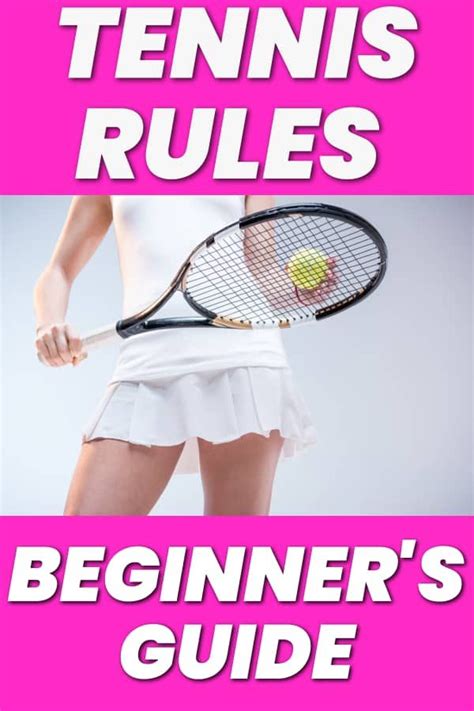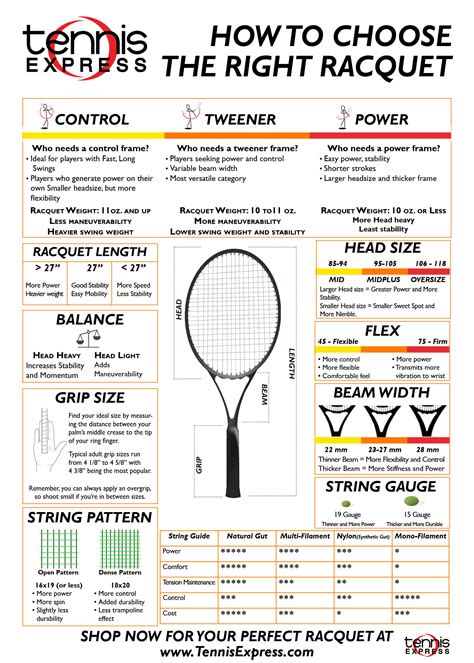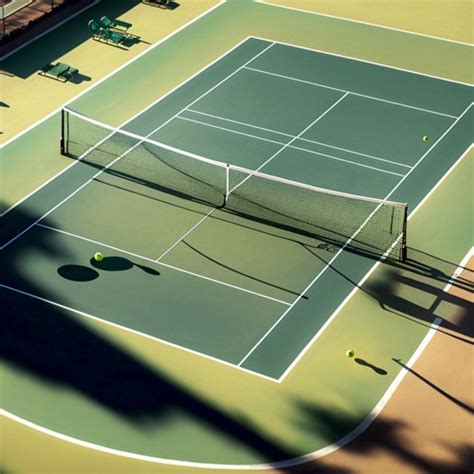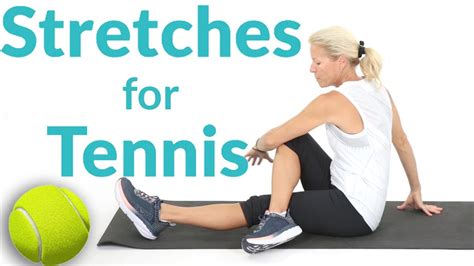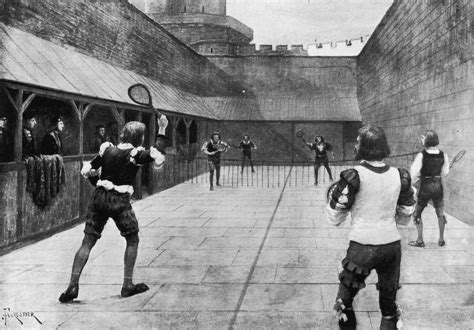A comprehensive guide for beginner tennis players covering rules, terminology, court dimensions, common mistakes, skill progression, and FAQs to enhance your game.A Beginner’s Guide To Tennis: Rules And Regulations
Are you ready to take your first steps into the thrilling world of tennis? Whether you’re drawn by the sport’s rich history or the excitement of competition, understanding the foundational rules and regulations is essential for every newbie. This beginner’s guide will help you navigate the intricacies of tennis, from key terminology and court dimensions to essential equipment guidelines. We’ll also highlight common mistakes to avoid and provide tips on progressing your skills after mastering the basics. By the end, you’ll have a solid framework to confidently step onto the court and embrace the game. Let’s serve up your tennis journey!
Understanding The Basic Rules Of Tennis For A Beginner’s Start
Tennis may appear complex at first, but grasping the basic rules can enhance your understanding and enjoyment of the game. Here are the fundamental rules every beginner’s player should know:
- Points: A player scores a point when their opponent fails to return the ball within the court’s lines. The scoring system consists of points (0, 15, 30, 40), games, sets, and matches.
- Serving: The server must stand behind the baseline and hit the ball into the opponent’s service box. The serve must alternate sides after each point.
- Rally: Players take turns hitting the ball back and forth over the net. The rally continues until one player fails to return the ball.
- Let Serve: If the ball touches the net but lands in the correct service box, it’s a “let” and the serve is replayed.
- Game Structure: A standard match can be played as best of three or five sets, depending on the competition. Each set typically consists of games, and a player must win at least six games to win the set.
- Foot Fault: If the server steps on or over the baseline before hitting the serve, it’s called a foot fault, and the serve is considered a fault.
- Scoring Errors: It’s important to keep track of the score accurately. Miscommunication can lead to disputes, so always confirm the score before starting the next rally.
- Winning The Match: The player or team who wins the most sets wins the match. In tournaments, if a set reaches 6-6, a tiebreaker may be played to determine the winner.
Understanding these rules will lay a solid foundation for your journey as a beginner’s player. As you gain more experience, you will become familiar with additional rules and nuances that make tennis such an exciting sport.
Essential Tennis Terminology Every Beginner Should Know
Learning the fundamental terms in tennis is crucial for any A Beginner’s journey in the sport. Familiarity with the vocabulary will help you understand the game better, communicate effectively on the court, and follow match commentary. Here are some essential tennis terms:
- Ace: A serve that is so well hit that the opponent cannot touch it with their racket.
- Breakpoint: A situation where the receiving player has a chance to win the game on the opponent’s serve.
- Deuce: A score of 40-40, where a player needs to win two consecutive points to win the game.
- Game: A unit of scoring in tennis. A player must win four points to win a game, provided they lead by at least two points.
- Set: A series of games, typically won by the first player to win six games with at least a two-game lead.
- Match Point: A situation where the player serving has a point that could win them the match.
- Let: A serve that hits the net but still goes over and lands in the correct service box.
- Forehand: A shot made with the front of the hand facing the direction of the stroke.
- Backhand: A stroke made with the back of the hand facing the direction of the stroke.
- Score: The current tally of points and games, which determines the status of the match.
Understanding these terms will give you a solid foundation as you navigate the world of tennis. With practice, you’ll find yourself becoming more comfortable with both the game and its associated language.
Court Dimensions And Equipment Guidelines For Beginners
Understanding court dimensions and the right equipment is crucial for any A Beginner’s journey into tennis. Here’s a comprehensive overview of what you need to know:
Court Dimensions
The standard tennis court dimensions are as follows:
| Type of Court | Dimensions |
|---|---|
| Singles Court | 78 feet long x 27 feet wide |
| Doubles Court | 78 feet long x 36 feet wide |
All courts have a service line that is 21 feet from the net, creating a service box for players to aim their serves. The net height at the center is 3 feet, while it stands at 3 feet 6 inches at the posts.
Essential Equipment for Beginners
To kickstart your tennis experience, here are the essential equipment items you’ll need:
- Tennis Racket: Choose a racket that is lightweight and has a larger head size for better control and ease of use.
- Tennis Balls: Opt for low-compression balls that are designed for beginners. These balls are softer and allow for longer rallies.
- Tennis Shoes: Invest in a good pair of tennis shoes that provide stability and support during quick lateral movements.
- Appropriate Attire: Wear breathable clothing that allows for easy movement. Many clubs have specific dress codes.
Equipped with the right knowledge of court dimensions and essential equipment, A Beginner’s experience will be significantly improved, making every practice session more enjoyable and productive.
Common Mistakes To Avoid As A Beginner Tennis Player
Starting out in tennis can be both exciting and overwhelming. As A Beginner’s journey in tennis unfolds, there are several common mistakes that can hinder progress and enjoyment. Here are some pitfalls to watch for:
- Neglecting Footwork: Many beginners focus primarily on their racket skills while overlooking the importance of footwork. Good footwork is crucial for positioning and timing, so invest time in drills that enhance your movement on the court.
- Improper Grip: Using the wrong grip can lead to inefficient strokes and even discomfort. Familiarize yourself with different grips, such as the Eastern and Western grips, and choose the one that feels most natural for your playing style.
- Aiming Too High: It’s common for beginners to aim for power over precision, which can lead to many missed shots. Focus instead on control and placement to build your confidence and accuracy.
- Ignoring the Serve: The serve is the only shot in tennis that you have complete control over, yet many beginners don’t pay it the attention it deserves. Regular practice will help you develop a consistent serve.
- Not Utilizing the Non-Dominant Hand: Many beginners underestimate the role of the non-dominant hand in shots. This hand helps with balance and racket control, especially during forehands and serves.
- Overexertion: Eager to improve, beginners often play for long durations without breaks or appropriate hydration. Listen to your body, take regular breaks, and don’t push yourself too hard, especially when just starting out.
- Lack of Consistency: Rushing into playing matches can lead to inconsistency and frustration. Instead, spend ample time practicing your strokes and techniques before diving into friendly games.
- Ignoring Mental Aspects: Tennis is as much a mental game as it is physical. Work on your mental toughness and learn techniques to stay focused and calm during matches.
By being aware of these common mistakes, you can enhance your learning experience as a A Beginner’s in tennis and pave the way for improved performance and enjoyment in the sport.
How To Progress Your Skills After Mastering The Basics
Once you’ve established a solid foundation in tennis as A Beginner’s player, the next step is to enhance your skills and elevate your game. Here are several effective strategies to help you progress:
By employing these strategies and remaining dedicated to your practice, you’ll be well on your way to advancing your tennis skills beyond the basics, ensuring a fulfilling journey in the sport.
Frequently Asked Questions
What are the basic rules for scoring in tennis?
In tennis, matches are scored using a system that includes points, games, and sets. A game is won by the player who first wins four points with at least a two-point lead. Games are grouped into sets, which require six games to win, also with a two-game advantage.
What is the difference between singles and doubles in tennis?
Singles matches are played between two players, while doubles matches involve four players, with two on each side of the net. The court dimensions differ slightly for doubles, as the doubles sidelines are used.
What are the key areas of the tennis court?
A tennis court consists of the baseline, service line, center mark, and the doubles sidelines, among other areas. The court is divided into two halves by the net, and understanding each area is crucial for effective play.
What is a ‘let’ serve in tennis?
‘Let’ serves occur when the served ball hits the net but still goes over and lands in the proper service box. The serve is then replayed without penalty.
How does a tie-breaker work in tennis?
A tie-breaker is played when both players reach a score of 6-6 in a set. Players serve alternately, and the first player to win seven points with a two-point margin wins the tie-breaker and the set.
What equipment do I need to start playing tennis?
To start playing tennis, you need a tennis racquet, tennis balls, comfortable sportswear, and appropriate footwear for the court. Beginners may also benefit from using a racquet that is lightweight and suitable for their skill level.
Are there any common violations in tennis?
Common violations include foot faults, which occur when a player steps on or over the baseline during a serve, and letting the ball bounce twice before playing it. Players can also be penalized for conduct violations if they disrupt the game.

